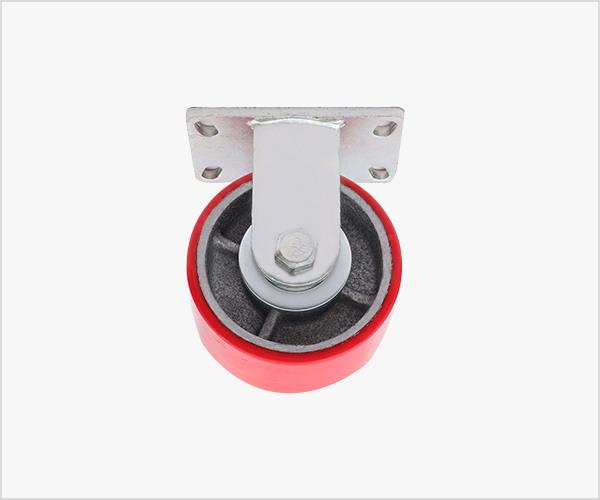According to the specific load, the casters can generally be: small casters, light casters, medium casters, heavy casters and super heavy casters.
Heavy-duty casters are products with large load-bearing capacity among these casters. The wholesale carrying capacity of stainless steel casters is relatively strong (the carrying capacity is 1-15 tons and above). The specifications of heavy casters are generally between 4 inches and 16 inches. The thickness of the bracket can choose 8mm, 10mm, 16mm, 20mm steel plate. The materials of the monopod are rubber, nylon and polyurethane, which have a wide range of applications. The surface of the caster bracket has been treated with anti-corrosion, the performance is relatively good, the durability is strong enough, and the rotation is flexible, and it is also very convenient to use. It can also be customized according to customer requirements, customized special-shaped, heavy-duty rubber wheels, polyurethane casters, nylon casters and various special-shaped caster brackets.
Heavy-duty casters are widely used in the fields of wear resistance, impact resistance, high/low temperature resistance, high load resistance, chemical corrosion resistance, etc., and can adapt to various harsh environments. It is a supporting product for factories, warehouses, mines, construction, military industry and other fields.
How to maintain heavy casters?
Regularly check the structure and tightness of the heavy-duty continuous caster, and regularly rotate the sides or ends of the continuous caster. The inspection is divided into the following items:
1. Whether the welding point or welding bottom plate is damaged.
2. Are the nuts and bolts loose?
3. Check whether the equipment is deformed due to overload or severe impact. The uneven distribution of weight on one or two universal casters can cause the casters to deform and not rotate.
4. If it is a caster with plunger, make sure that the installation hole of the device is not bent and is tightly connected with the plunger.
5. Use locknuts or lock washers to install casters.
6. Confirm whether the expansion rubber sleeve has been tightened in place.

Previous: Instructions and precautions for leveling casters
下一条: No Information
Related News
- Instructions and precautions for leveling casters
- Knowledge about the product warranty period and maintenance of industrial casters
- Purchase knowledge of stainless steel casters
- The main application fields of industrial universal wheels and the selection of casters
- How to overhaul the brake casters?
- The composition of the accessories of the trolley casters and the carrying weight
- What inspections and tests must be passed during the production of shock-absorbing casters?
- Features of silent casters and introduction of accessories
- What is the market demand for polyurethane casters? What are the development prospects?

